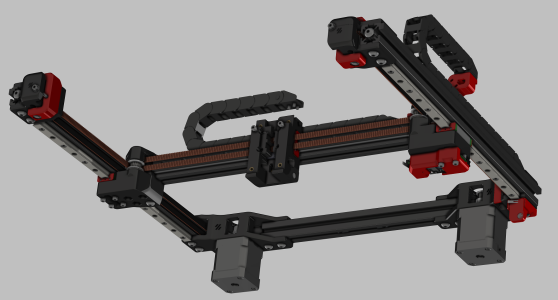tetra
Member
Greetings Voronians,
I'm in investigation mode, and have not built a Voron yet. I'm examining the (really fantastic) Trident CAD model, as I prefer the bed to move in Z vs the XY gantry system. If/when I build a Voron, it will most likely be the Trident. I'm curious about the design decision to use an A/B belting configuration for the gantries. IIUC, both motors have to be operational even for straight X or Y moves. From digging into the model, teeth on the back of the extruder mount lock both of the belts to the mount. It seems like if I only moved one motor, the nozzle would actually trace a diagonal. There must be an advantage to this type of configuration, but I am drawing a blank. I have a CoreXY Stacker S4, and it uses one stepper for X and another for Y in a manner that is pretty straightforward. Why the belt/stepper configuration on the Trident, and what about it is better?
I'm not trying to say the Stacker method is better, nor am I trying to start a war on the topic, I am genuinely ignorant about why this design won out. Looking at the model, it's very obvious you know what you're doing and I know there's a reason.
Thanks for helping me understand this design.

I'm in investigation mode, and have not built a Voron yet. I'm examining the (really fantastic) Trident CAD model, as I prefer the bed to move in Z vs the XY gantry system. If/when I build a Voron, it will most likely be the Trident. I'm curious about the design decision to use an A/B belting configuration for the gantries. IIUC, both motors have to be operational even for straight X or Y moves. From digging into the model, teeth on the back of the extruder mount lock both of the belts to the mount. It seems like if I only moved one motor, the nozzle would actually trace a diagonal. There must be an advantage to this type of configuration, but I am drawing a blank. I have a CoreXY Stacker S4, and it uses one stepper for X and another for Y in a manner that is pretty straightforward. Why the belt/stepper configuration on the Trident, and what about it is better?
I'm not trying to say the Stacker method is better, nor am I trying to start a war on the topic, I am genuinely ignorant about why this design won out. Looking at the model, it's very obvious you know what you're doing and I know there's a reason.
Thanks for helping me understand this design.

Last edited:

